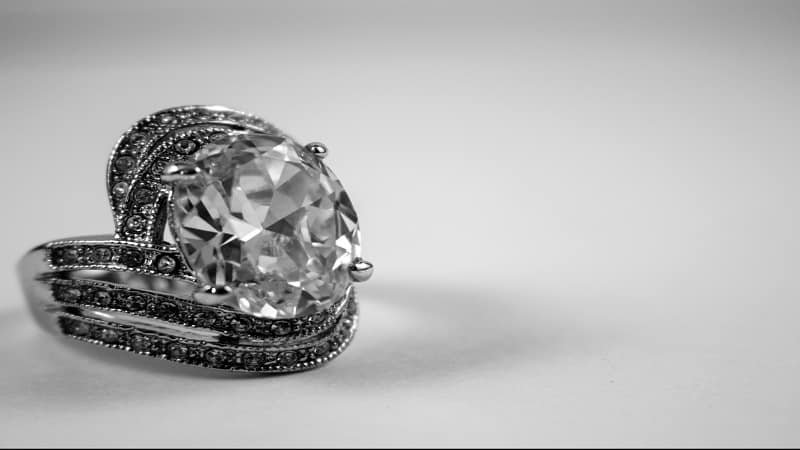How Is Platinum Mined?

How is platinum mined? Well, platinum mining is a complex process and we’ll get into that. But before we do, let’s look at some interesting facts about the metal.
Taking its name from the ‘platino,’ the Spanish term for silver, platinum is a glistening white metal considered by many to be one of the most stable substances known to mankind. Not only is it extremely malleable and ductile in a nature, platinum is also immune to the affects of air, water, sunlight – even acids!
It’s no wonder we find it in so many of the things we use in our daily lives, from jewelry, cutlery and door knobs to electrical appliances, engine parts and medical and dental equipment. In fact, platinum compounds are also incorporated into many anti-cancer drugs, especially those used to treat advanced leukemia. Platinum-osmium alloy can be found in pacemakers and heart replacement valves as well.
Unfortunately, this versatile metal is not always so easy to extract. Nuggets or grains of pure platinum can be rare as it is most commonly found alloyed to other metals such as iron, copper, nickel or gold. Getting your hands on it requires digging deep into the sulfide layers of special igneous bodies found in parts of Canada, Russia, South Africa, Zimbabwe, Australia and America.
History of Platinum Mining
Virgin platinum and its alloys are both are typically common to sand and gravel beds called ‘placer deposits.’ These occur when old rocks are eroded and grounded further by water flowing in rivers and streams. It’s a slow process, one that can take centuries and so, miners often find placer deposits depleted
Take, for example, the Ural Mountains in western Russia. Up until the 19th century, the region was heavily mind for its alluvial deposits, as a result of which, the region has now been stripped off of its highest-grade ore and constitutes less than 1% of the country’s total platinum production. Luckily, significant quantities of the metal ore were found in the early 2000s on the far eastern side of Russia, Kondyor Mine in Khabarovsk Koryak Mine in Kamchatka to be specific. Together, they generated 185,000 oz of platinum in the year 2005.
The processes of platinum mining
Extracting platinum is somewhat a more simple process as compared to the mining of other elements. Most times, miners use large dredges which basically scoop the dirt (which, hopefully, is rich in platinum) from riverbeds or mining pits. The dirt collected is thereby ‘washed’ several times – up until grains of metal or platinum nuggets are found in it. The metal is then pulled from the mound and taken to the mining facility for further processing.
It must be noted that platinum can also be mined as an ore. An ore, by definition, a naturally-occurring solid substance in the Earth from which any metal – or other, valuable minerals / elements – can be derived for profit-seeking purposes. Platinum ore is there, essentially, early-game ore that spawns in the Underground and Cavern layers, as well as on Floating Islands. It is primarily used to craft Platinum Bars.
The main ore minerals of platinum are pyrrhotite, chal-copyrite, pentlandite and cubanite. The main platinum metals in copper-nickel ores are platinum and palladium, which occurs in greater quantities. Ores such as sperrylite and cooperite may be mined when they are found in quantities that make extraction feasible financially. Many a times, platinum is acquired as a by-product when ores of other metals like copper and nickel are refined.
Modern-day Platinum Mining
Now, common sense dictates that most mining takes place deep within the surface of the Earth. But to get there, miners often have to resort to some rather extreme measures. One such method is using explosives to literally blast their way down.
In this method, the miners pack explosives into holes they have drilled in the surround rock. Once the explosives are set off, the rock explodes into smaller rocks which are easier to navigate through. The broken rock is also collected and sent back up for further processing. Simple enough, right?
Unfortunately, refining platinum ore is much more costly and labor-intensive, in that the whole procedure can last up to 6 to 8 weeks for just one small batch. Not to mention, it can take nearly 12 tons of ore to make one single ounce of platinum!
Once the broken ore has been sent up, it is further crushed by special machinery and mixed with water and chemicals that stick to the platinum and make it all the more conspicuous to the naked eye. This process is called Flotation Separation. Herein, air bubbles are blown through the rock-water-chemical mix so they can carry the platinum fragments up to the surface of the bath. The resulting froth is retrieved and dried into powder form. One ton of this powder can contain anything between 3 to 30 ounces of Platinum Group Metals (PGM). The powder is then treated at extremely high temperatures to eradicate any impurities. This is known as smeltering.
Further processing removes any base metals in the matte. By now, the concentrate contains about 15% to 20% PGMs. The next – and final – step will be to treat the concentrate with aqua regia – an acidic, corrosive and oxidative mixture of concentrated hydrochloric acid (HCl) and concentrated nitric acid to dissolve the platinum. It will then be filtered, purified and heated to produce pure platinum.
Our final thoughts
Platinum deposits are located in just a few, select parts of the world. It is said that for every 10 gold mines, there is but a single platinum one. That is why one must be very careful when dealing with it. Areas surrounding the mines should not be harmed and special measures must be undertaken to ensure risk minimization and miners’ health and safety.